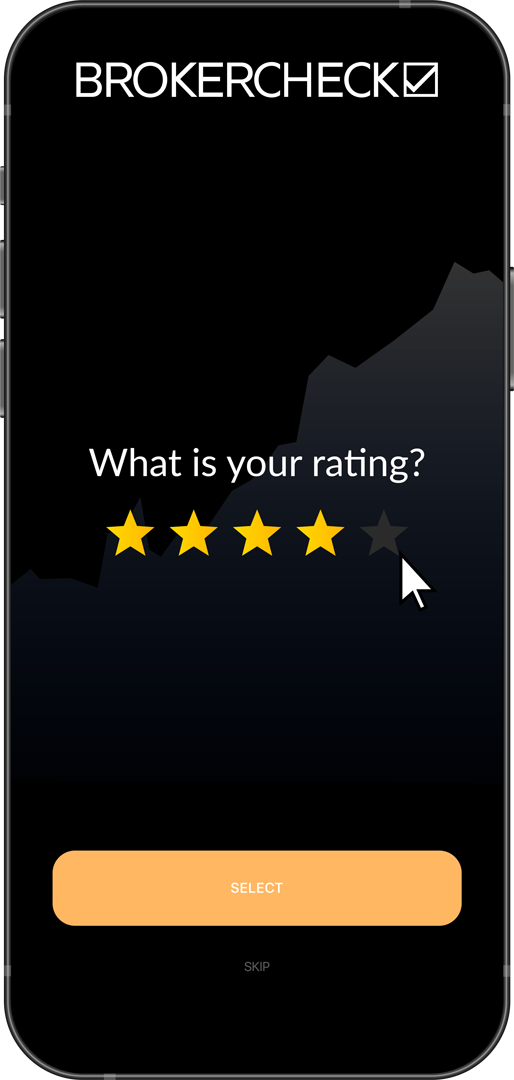1. Understanding Simple Moving Average (SMA)
The Simple Moving Average (SMA) is a pivotal tool in the trader’s arsenal, serving as a beacon in the tumultuous sea of market volatility. It’s the unassuming hero of technical analysis, providing a smoothed line that helps traders discern the underlying trend amidst the noise of daily price fluctuations.
At its core, the SMA is a straightforward arithmetic calculation. It’s computed by adding up the most recent set of values (like closing prices over a specified number of periods) and then dividing that sum by the number of periods. The resulting line is then plotted on the chart, providing a visual representation of the average price over that time frame.
One of the key strengths of the SMA is its versatility. It can be adjusted to various time frames, making it applicable for both short-term day traders and long-term investors. A shorter SMA will stick closely to the current price action, making it ideal for identifying short-term trends. On the other hand, a longer SMA smooths out short-term fluctuations, providing a clearer picture of the long-term trend.
However, it’s crucial to remember that the SMA is a lagging indicator. It’s based on past prices and therefore tends to react slowly to recent changes in price. This lag can be both a strength and a weakness. On one hand, it helps filter out minor price fluctuations, making the underlying trend clearer. On the other hand, it can cause delays in signal generation, potentially leading to late entries or exits.
Interpreting the SMA is a skill that comes with practice. A rising SMA indicates an uptrend, while a falling SMA suggests a downtrend. When the price crosses above the SMA, it could be a bullish signal, and when it crosses below, it could be a bearish signal. However, these signals should always be used in conjunction with other technical analysis tools to confirm their validity and reduce the risk of false signals.
The SMA can also be used to identify support and resistance levels. These are price levels at which the price tends to bounce back after a decline (support) or pull back after an advance (resistance). The SMA often acts as a dynamic support or resistance level, with the price bouncing off or pulling back from the SMA line.
In the realm of trading, the Simple Moving Average is akin to a trusted compass, guiding traders through the choppy waters of the market. It’s a tool that, when wielded with skill and understanding, can illuminate the path to profitable trades.
1.1. Definition of SMA
The Simple Moving Average is calculated by adding up the prices of an instrument over a specified number of periods and then dividing the total by the number of periods.
For example, if you wanted to calculate a 5-day SMA for a stock, you would add up the closing prices for the last 5 days and then divide by 5.
Here’s the formula:
SMA = (P1 + P2 + P3 + … + Pn) / n
Where:
- P1, P2, P3, …, Pn are the prices for each of the periods, and
- n is the number of periods.
The Simple Moving Average provides a smoothed line which can help traders identify trends by reducing the noise of daily price fluctuations. When the price is above the SMA line, it might indicate an uptrend, and when the price is below the SMA line, it might indicate a downtrend. However, this should be used alongside other indicators for more accurate predictions.
1.2. How SMA Works
The Simple Moving Average (SMA) operates on the principle of averaging a certain number of past data points. This is done to smoothen out short-term fluctuations and highlight longer-term trends or cycles. The formula for calculating SMA is straightforward: it’s simply the sum of the closing prices over a specified number of time periods, divided by the number of time periods. For instance, if you’re calculating a 10-day SMA, you’d add up the closing prices of the last 10 days and divide by 10.
The SMA line that gets plotted on the chart provides a historical visual representation of the average price. This line moves up or down based on the direction of the stock’s price movements. A rising SMA line indicates an uptrend, while a falling SMA line suggests a downtrend.
The SMA serves as a key reference point for traders. When the price crosses above the SMA line, it could be a bullish signal, and when it crosses below, it could be a bearish signal. However, these signals are not foolproof and should be used in conjunction with other technical indicators and fundamental analysis for the best results.
In essence, the SMA is a versatile tool that can be customized to suit different trading styles and timeframes. Whether you’re a day trader looking at a 5-minute chart or a long-term investor analyzing weekly charts, the SMA can provide valuable insights into market trends.
2. Using SMA in Trading Strategies
SMA, or Simple Moving Average, is a potent tool in the hands of a trader, offering a fresh perspective on market trends. It’s a concept that’s both easy to grasp and incredibly effective, making it a staple in many trading strategies.
At its core, SMA is an average of a specific number of periods, which smoothens out price data to create a line that traders can use to identify potential market trends. But how exactly do you use SMA in trading strategies?
Firstly, traders often use SMA as a signal line. When the price crosses above the SMA, it could be a bullish signal, indicating it might be a good time to buy. Conversely, when the price crosses below the SMA, it could be a bearish signal, suggesting it might be time to sell.
Secondly, SMA can be used to identify support and resistance levels. In an uptrend market, the SMA line often acts as a support level where price tends to bounce off. Similarly, in a downtrend market, the SMA may act as a resistance level where price struggles to break through.
Lastly, traders often use two SMAs with different periods (like a 50-day and a 200-day SMA) to generate trading signals. This strategy, known as SMA crossover, involves buying when the shorter period SMA crosses above the longer period SMA (bullish crossover) and selling when the shorter period SMA crosses below the longer period SMA (bearish crossover).
It’s important to remember that while SMA is a powerful tool, it’s not infallible. It’s best used in conjunction with other technical indicators and strategies to ensure a more accurate reading of market trends. Trading is a risky business, and it’s crucial to understand and manage these risks effectively.
2.1. SMA Crossover Strategy
In the vast galaxy of trading strategies, the SMA Crossover Strategy shines as a guiding star for both novice and experienced traders. This strategy leverages the power of the Simple Moving Average (SMA), a tool that smooths out price data by constantly updating an average of price over a specific period.
The SMA Crossover Strategy is deceptively simple. It involves two SMA lines: a short-term SMA (usually 50-day) and a long-term SMA (often 200-day). The ‘crossover’ occurs when these two lines intersect. If the short-term SMA crosses above the long-term SMA, it’s a bullish signal indicating it might be an ideal time to buy. Conversely, if the short-term SMA crosses below the long-term SMA, it’s a bearish signal, suggesting it might be time to sell.
The beauty of this strategy lies in its simplicity and adaptability. It’s straightforward enough for beginners to grasp quickly, yet flexible enough for seasoned traders to tweak according to their trading style and risk tolerance. However, it’s important to remember that while the SMA Crossover Strategy can be a powerful tool in your trading arsenal, it’s not infallible. It’s best used in conjunction with other indicators and strategies to confirm signals and mitigate risk.
Pros and Cons of the SMA Crossover Strategy
- Pros: Easy to understand and implement, adaptable to different trading styles and timeframes, can provide clear buy and sell signals.
- Cons: Can produce false signals in volatile markets, lagging nature of SMA can result in delayed signals, not effective in sideways markets.
Despite these potential drawbacks, the SMA Crossover Strategy remains a favorite among traders worldwide. With practice and patience, it can help illuminate the often murky path of market trends, providing valuable insight to inform your trading decisions.
2.2. SMA with Other Indicators
Unlocking the power of SMA (Simple Moving Average) becomes even more exciting when combined with other trading indicators. This multifaceted approach can significantly enhance your trading strategy, providing a more holistic view of market trends and potential entry and exit points.
Take, for example, the Relative Strength Index (RSI). When used in conjunction with SMA, it can help identify overbought or oversold conditions. Imagine that the SMA line crosses above the price line, indicating a potential upward trend. Now, if the RSI is below 30 (an oversold condition), it could be a strong signal to buy.
Likewise, the MACD (Moving Average Convergence Divergence) is another powerful tool to pair with SMA. This indicator reveals changes in the strength, direction, momentum, and duration of a trend. When the MACD line crosses above the signal line while the SMA indicates an upward trend, it might be the right time to enter the market.
Bollinger Bands are another excellent companion for SMA. The upper and lower bands can serve as dynamic support and resistance levels. If the price touches the lower band and the SMA is trending up, it could suggest a good buying opportunity.
Remember, these are just examples. There are countless other indicators you can pair with SMA to refine your trading strategy. The key is to experiment, backtest, and find the combination that works best for your trading style and risk tolerance. But one thing is certain: when used wisely, SMA combined with other indicators can become a formidable weapon in your trading arsenal.
2.3. Choosing the Right SMA Period
In the realm of trading, the choice of the right Simple Moving Average (SMA) period is a pivotal decision that can significantly impact your trading outcomes. It’s not just about selecting a random number and hoping for the best. Instead, it’s about understanding the market dynamics, your trading goals, and how different SMA periods can align with these factors.
Shorter SMA periods, such as 5 or 10 days, can be ideal for short-term traders seeking to capitalize on rapid market movements. These SMAs are highly sensitive to price changes, providing a close representation of current market trends. However, they are also prone to producing false signals due to their high reactivity to price volatility.
Longer SMA periods, like 50, 100, or 200 days, are less sensitive to daily price fluctuations, providing a smoother and more stable depiction of the price trend. They are beneficial for long-term traders who are more interested in identifying major trend shifts rather than short-term price movements.
It’s important to note that there’s no ‘one-size-fits-all’ when it comes to choosing the right SMA period. The best approach is to experiment with different SMA periods and see which one aligns best with your trading style and risk tolerance.
Remember, the SMA is a tool to help you make informed trading decisions. It’s not a crystal ball that can predict market movements with absolute certainty. Always consider other market indicators and factors before making a trading decision.
3. Risks and Limitations of SMA
While the Simple Moving Average (SMA) is a powerful tool in a trader’s arsenal, it’s crucial to understand that it comes with its own set of risks and limitations. One of the primary limitations is that it’s inherently a lagging indicator. This means it’s based on past prices and can therefore only provide information about what has already happened, not what will happen in the future. This can lead to late entries into trades, potentially missing out on significant gains.
Another notable risk is the false signal. The SMA can sometimes generate a buy or sell signal that is not reflective of the overall trend. For instance, the SMA might indicate a bullish trend when the overall market trend is bearish, leading to costly mistakes. This is particularly true in volatile markets where price swings can distort the average.
Moreover, the SMA is sensitive to the period chosen. A 50-day SMA will give very different signals compared to a 200-day SMA. If the period is too short, the SMA might be too sensitive to minor price changes, causing frequent buy and sell signals. Conversely, if the period is too long, the SMA might be too insensitive, potentially missing significant trend changes.
Finally, the SMA does not account for the impact of volume. Two days with the same closing price but vastly different volumes will have the same impact on the SMA. This can be problematic as volume often provides important clues about the strength of a trend.
While these risks and limitations certainly don’t render the SMA useless, they highlight the importance of using it in conjunction with other technical analysis tools and indicators. A balanced, informed approach to trading will always yield the best results.
3.1. Lagging Indicator
Lagging indicators are a vital tool in the trading toolkit, offering a retrospective view of market trends. One of the most commonly used lagging indicators is the Simple Moving Average (SMA). The SMA is calculated by adding up the last ‘X’ period’s closing prices and then dividing that number by X. The result is a smooth line that traders use to understand the market’s past behavior.
While lagging indicators may seem less exciting than their leading counterparts, they provide the solid ground of historical data. This data is crucial for traders who base their strategies on past market trends. The SMA, as a lagging indicator, helps traders to identify potential buy and sell signals based on historical price movements.
The SMA is particularly useful in volatile markets, where price fluctuations can often mislead traders. By smoothing out price data, the SMA provides a clearer picture of the overall trend. This can help traders make more informed decisions, reducing the risk of making trades based on short-term price spikes or dips.
However, it’s important to note that like all lagging indicators, the SMA has its limitations. It’s based on past data, so it can’t predict future market movements. It’s also slower to respond to recent price changes, which can lead to late entry or exit signals. Therefore, while the SMA is a valuable tool, it should be used in conjunction with other indicators and analysis methods for the best results.
To make the most of the SMA, traders should consider using it as part of a broader trading strategy. This could involve combining the SMA with leading indicators, such as the Relative Strength Index (RSI), to get a more complete picture of the market. By doing so, traders can leverage the strengths of both lagging and leading indicators, enhancing their ability to make profitable trades.
3.2. False Signals
In the world of trading, not all signals are created equal. Some, like the golden cross or death cross, can be powerful indicators of an impending bull or bear market. But others, like the false signals that sometimes occur when using a Simple Moving Average (SMA), can lead traders astray if they’re not careful.
One of the most common false signals is the whipsaw. This happens when the market is volatile and the price frequently crosses above and below the SMA line, generating a flurry of buy and sell signals that can confuse traders and lead to poor decision making. These false signals are particularly common during periods of market uncertainty or when major news events cause sudden price swings.
Another type of false signal is the lag. Because the SMA is calculated using past data, it can sometimes be slow to respond to rapid changes in price. This can result in the SMA indicating a bullish trend when the price is actually falling, or vice versa. Traders who rely solely on the SMA for their trading decisions may end up buying or selling at the wrong time if they don’t take this lag into account.
So how can traders avoid these false signals? One way is by using a shorter time period for the SMA. This can make the SMA more responsive to recent price changes and reduce the likelihood of whipsaws and lags. However, it can also increase the risk of overtrading, as the SMA will generate more signals overall.
Another approach is to combine the SMA with other technical indicators, such as the Relative Strength Index (RSI) or Moving Average Convergence Divergence (MACD). These can provide additional context and help confirm whether a signal from the SMA is likely to be accurate.
Ultimately, the key to avoiding false signals when using the SMA is to understand its limitations and use it as part of a broader trading strategy, rather than relying on it in isolation. By doing so, traders can make more informed decisions and increase their chances of success in the market.
3.3. Inefficiency in Volatile Markets
Volatile markets, while presenting a wealth of opportunities, can also be a breeding ground for inefficiencies. This is especially true when using a simple moving average (SMA) as a trading tool. The SMA, by its very nature, is a lagging indicator. It calculates the average price over a specific period, thereby smoothing out price fluctuations and offering a clearer view of the overall trend.
However, in a volatile market, this smoothing effect can sometimes obscure the rapid price changes that characterize such markets. As the SMA reacts to price changes with a delay, traders may find themselves making decisions based on outdated information. This can lead to missed opportunities or, worse, to entering trades at unfavorable prices.
Reacting to market volatility is where the SMA can show its limitations. The longer the time period used for the SMA, the slower it reacts to price changes. This can lead to late entry or exit signals. Conversely, a shorter time period SMA will react faster, but it may generate false signals as it reacts to minor price fluctuations.
Overcoming these inefficiencies requires a nuanced approach. Traders can consider using a combination of different period SMAs to capture both the short-term price movements and the longer-term trends. Additionally, incorporating other technical indicators or fundamental analysis into your trading strategy can provide a more comprehensive view of the market, helping to mitigate the limitations of the SMA in volatile markets.
Remember, every trading tool has its strengths and weaknesses. The key is to understand these, adapt your strategy accordingly, and always be prepared for the inherent unpredictability of the markets.
4. Tips for Successful SMA Trading
Understanding the Basics is the first step towards effective SMA trading. The Simple Moving Average (SMA) is a technical indicator that traders use to identify trends. It’s calculated by averaging a certain number of past prices. This smoothens out price fluctuations, making it easier to spot the trend.
Choosing the Right Time Frame is essential. The length of the SMA you select depends on your trading style. Short-term traders often use a 10 or 20-day SMA, while long-term traders may prefer a 50 or 200-day SMA. Remember, the longer the time frame, the more significant the SMA.
Utilizing SMA Crossovers can signal potential buy or sell opportunities. A bullish crossover occurs when a short-term SMA crosses above a long-term SMA, indicating a potential upward trend. Conversely, a bearish crossover happens when a short-term SMA crosses below a long-term SMA, suggesting a possible downward trend.
Combining SMA with Other Indicators can provide more reliable signals. While SMA is a powerful tool, it’s not infallible. Consider using it alongside other indicators like Relative Strength Index (RSI) or Moving Average Convergence Divergence (MACD) to confirm signals and reduce the risk of false positives.
Practicing Risk Management is crucial in SMA trading. Always set stop-loss orders to limit potential losses and take-profit orders to secure gains. Also, never invest more than you can afford to lose. Trading is inherently risky, and while SMA can help you make informed decisions, it can’t guarantee profits.
In the world of SMA trading, Consistency is Key. Stick to your trading plan, even when things don’t go as expected. Emotional decisions often lead to mistakes. Stay disciplined, keep learning, and adjust your strategies as you gain more experience. Remember, successful trading is a marathon, not a sprint.
4.1. Pairing SMA with Price Action
Pairing the Simple Moving Average (SMA) with Price Action can be a game-changer for traders. It’s like combining the precision of a Swiss watch with the intuition of a seasoned trader. The SMA, with its ability to smooth out market noise and reveal the underlying trend, offers a solid foundation. But when you overlay this with Price Action – the real-time, unfiltered narrative of the market, you unlock a powerful synergy.
Price Action is the heartbeat of the market, the raw, unedited story of supply and demand. It’s the trader’s microscope, revealing the minute-by-minute shifts in sentiment. Combined with the SMA, it offers both a bird’s eye view of the market trend and a granular insight into market psychology.
Let’s break down this strategy. Start by identifying the overall trend using your SMA. A rising SMA indicates an uptrend, while a falling SMA suggests a downtrend. Once you’ve established the trend, turn your attention to Price Action. Look for price patterns that confirm the trend. For instance, in an uptrend, you might see a series of higher highs and higher lows.
But the real magic happens when the SMA and Price Action disagree. This is where you can spot potential reversals. If the SMA is rising, but Price Action starts to form lower highs and lower lows, it could signal a looming downtrend. Conversely, a falling SMA with Price Action forming higher highs and lows may suggest an impending uptrend.
Remember, pairing SMA with Price Action is not about finding the ‘perfect’ trade. It’s about gaining a deeper understanding of the market, improving your decision-making, and ultimately, enhancing your trading performance. It’s a strategy that requires patience, discipline, and a willingness to learn from the market. But for those who master it, the rewards can be substantial.
4.2. Using Multiple SMAs for Confirmation
When it comes to trading, clarity is key. One of the most effective ways to achieve this is by using multiple Simple Moving Averages (SMAs) for confirmation. This strategy involves using two or more SMAs with different time frames to validate your trading signals.
For instance, you could use a 50-day SMA along with a 200-day SMA. When the 50-day SMA crosses above the 200-day SMA, it’s a bullish signal indicating that it may be a good time to buy. Conversely, when the 50-day SMA crosses below the 200-day SMA, it’s a bearish signal suggesting that it might be time to sell.
What makes using multiple SMAs so powerful is the confirmation they provide. It’s like having a second opinion on your trading decision – when both SMAs point in the same direction, you can trade with more confidence. But remember, no strategy is foolproof. Always consider other market factors and use stop losses to manage your risk effectively.
Furthermore, you can also experiment with different time frames to see which ones work best for your trading style. Some traders might prefer using a 10-day and 20-day SMA, while others might find a 100-day and 200-day SMA more effective. The key is to test and adapt until you find the perfect balance that suits your trading approach.
To illustrate, let’s consider an example. Suppose the price of a stock is trending upwards, and both your 50-day and 200-day SMAs are also rising. This would be a strong indication that the upward trend is likely to continue. On the other hand, if the price was falling and both SMAs were also declining, it could be a sign that the downward trend might persist.
In essence, using multiple SMAs for confirmation is a simple yet powerful tool that can help you make more informed trading decisions. It provides a clearer picture of the market trend and can significantly increase your chances of success in the trading world.
4.3. Combining SMA with Risk Management
Simple Moving Average (SMA) is a powerful tool in a trader’s arsenal, but its effectiveness can be greatly enhanced when combined with robust risk management strategies. This approach ensures not only the potential for profit but also the protection of your capital.
The SMA provides a clear picture of the market’s overall direction, allowing traders to identify potential entry and exit points. However, the market is unpredictable and even the most reliable indicators can sometimes fail. This is where risk management steps in. It’s about setting stop losses and take profit levels, managing your investment per trade, and diversifying your portfolio.
Stop losses are crucial in risk management. By setting a stop loss, you limit your potential loss if the market moves against your position. The SMA can guide you in setting these levels. For instance, if you’re in a long position, you might set your stop loss just below the SMA line.
Take profit levels are equally important. These are the points at which you close your position to secure your profits. Again, the SMA can be a useful guide. If the price has been consistently above the SMA line and then falls below it, this could be a signal to take your profits.
Investment management involves deciding how much of your capital to risk on each trade. A common rule of thumb is to risk no more than 2% of your capital on a single trade. This way, even if you have a string of losses, your capital won’t be wiped out.
Diversification is another key aspect of risk management. By spreading your investments across different assets, you reduce the risk of a single asset wiping out your portfolio. The SMA can help you identify which assets are trending, aiding in diversification decisions.
Incorporating SMA with risk management not only enhances your trading strategy but also safeguards your capital. It’s a potent combination that can lead to consistent trading success.











